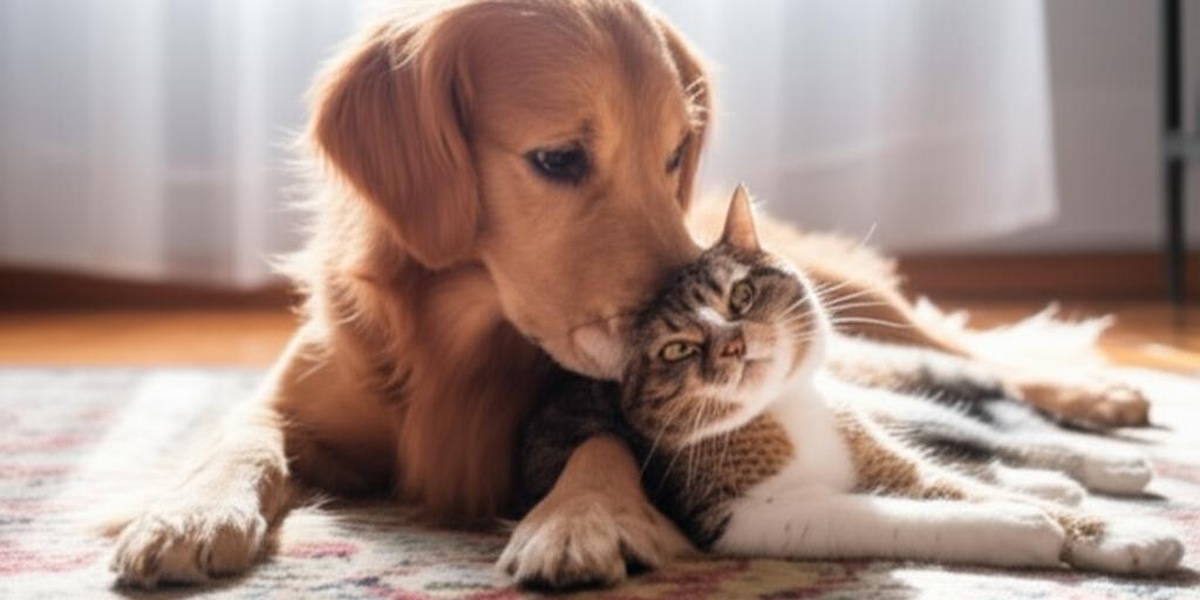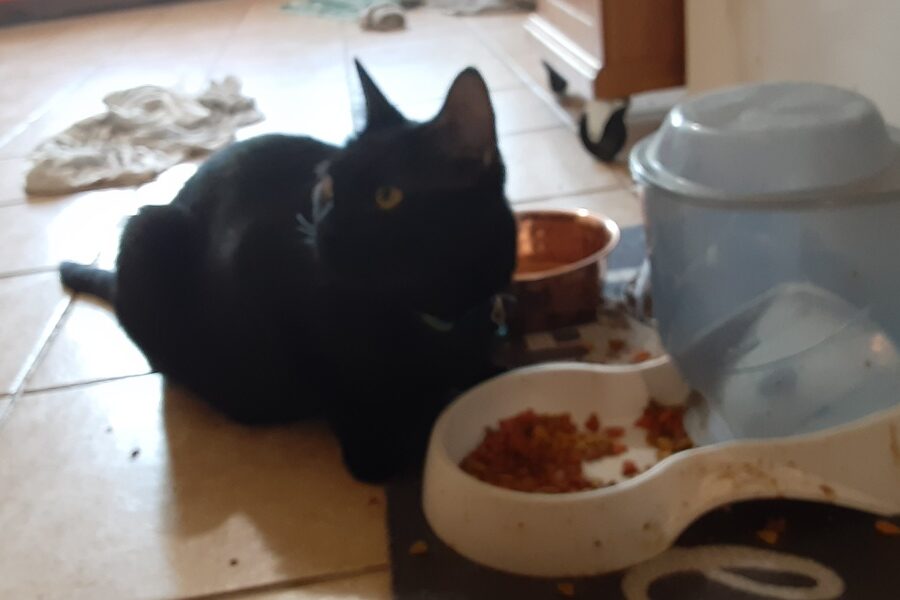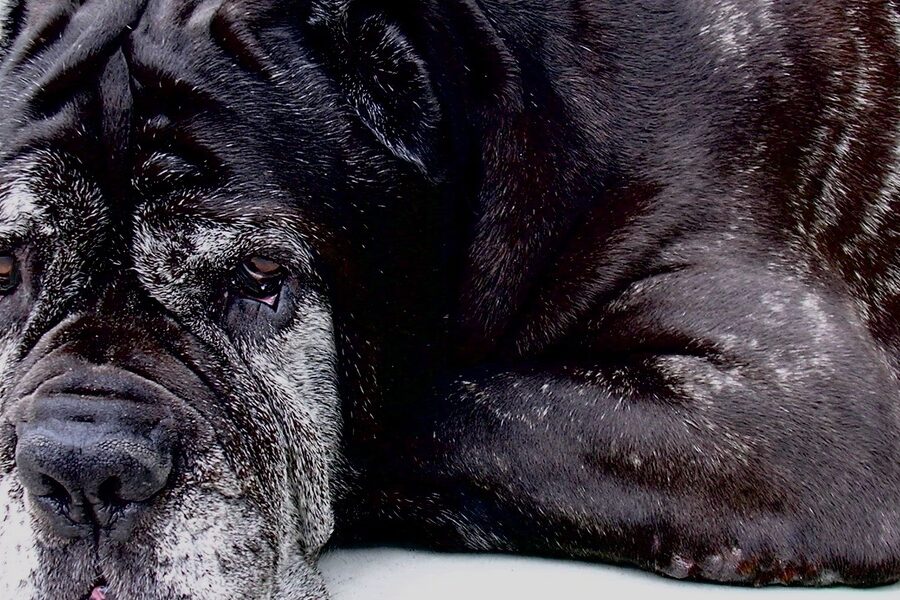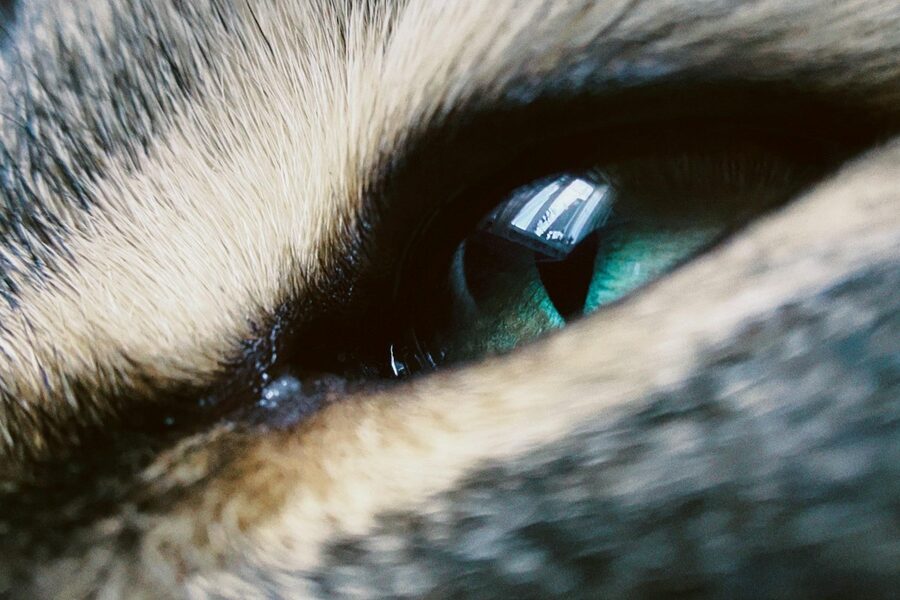Sharing a home with both dogs and cats can be wonderful, but it takes the right match to keep everyone calm and safe. Whether you have a small apartment or a house with a yard, knowing which dogs tolerate feline company makes training and daily life much easier.
There are 22 cat-friendly dog breeds, ranging from Basset Hound to Shih Tzu. For each, the list below shows Scientific name, Size (kg), Temperament (max 15 words) so you can compare energy, size, and personality at a glance — you’ll find below.
How can I introduce a dog to my cat safely?
Start slowly: swap bedding to mix scents, let them observe each other through a barrier, then do short supervised meetings with the dog on a leash. Reward calm behavior, keep interactions brief, and increase time together gradually; if either pet seems stressed, pause and try again later.
What should I consider for apartment living or busy households?
Look for lower-energy, patient breeds and check the Size (kg) and Temperament columns for clues. Small or mellow dogs and steady routines help; consider adopting an adult dog whose temperament is already known rather than an unpredictable puppy.
Cat-Friendly Dog Breeds
| Breed | Scientific name | Size (kg) | Temperament (max 15 words) |
|---|---|---|---|
| Golden Retriever | Canis lupus familiaris | 25-34 | Gentle, intelligent, and patient, often viewing cats as part of their family pack. |
| Basset Hound | Canis lupus familiaris | 18-29 | Calm, pack-oriented, and generally too low-energy to bother with a chase. |
| Bichon Frise | Canis lupus familiaris | 5-8 | Playful, cheerful, and sociable; sees cats as potential friends, not prey. |
| Cavalier King Charles Spaniel | Canis lupus familiaris | 6-8 | Affectionate and gentle, this breed was created purely for companionship with anyone. |
| Labrador Retriever | Canis lupus familiaris | 25-36 | Famously friendly and trainable, readily accepting cats as part of the family. |
| Pug | Canis lupus familiaris | 6-8 | Amiable, laid-back couch potato that prefers napping over chasing cats. |
| Bernese Mountain Dog | Canis lupus familiaris | 32-52 | Good-natured and calm, this gentle giant is known for its placid demeanor. |
| Collie | Canis lupus familiaris | 22-34 | Gentle, devoted, and sensitive; may try to herd the cat but rarely with malice. |
| Bulldog | Canis lupus familiaris | 18-23 | Dignified, calm, and friendly, with a very low-energy lifestyle perfect for cohabitation. |
| Poodle (Standard) | Canis lupus familiaris | 20-32 | Highly intelligent and trainable, easily taught to respect a cat’s personal space and boundaries. |
| Newfoundland | Canis lupus familiaris | 45-68 | A famously sweet and patient “nanny dog” with a protective, gentle nature. |
| Greyhound | Canis lupus familiaris | 27-40 | Surprisingly gentle and low-energy indoors, a “45-mph couch potato”. |
| Maltese | Canis lupus familiaris | 3-4 | A gentle and charming companion dog bred specifically to be a loving lapdog. |
| Shih Tzu | Canis lupus familiaris | 4-7.5 | Affectionate and outgoing, this lap dog generally prefers lounging to chasing. |
| Cocker Spaniel | Canis lupus familiaris | 11-14 | Merry and gentle, especially individuals from show lines versus field lines. |
| Great Dane | Canis lupus familiaris | 45-90 | A patient and friendly “gentle giant” that is often surprisingly aware of its size. |
| Havanese | Canis lupus familiaris | 4.5-7.5 | Sociable, intelligent, and charming companion who thrives on being part of the family. |
| Coton de Tulear | Canis lupus familiaris | 4-6 | A bright, happy-go-lucky companion breed that forms strong bonds with the entire family. |
| Irish Setter | Canis lupus familiaris | 27-32 | Outgoing and sweet-tempered, but high energy requires careful management and training. |
| Shetland Sheepdog | Canis lupus familiaris | 7-11 | Intelligent, gentle, and trainable, but may have a tendency to herd. |
| Papillon | Canis lupus familiaris | 3.5-4.5 | A friendly, alert, and surprisingly hardy toy breed that is highly trainable. |
| Poodle (Miniature) | Canis lupus familiaris | 4.5-7 | Intelligent, proud, and less prey-driven than many other small breeds. |
Images and Descriptions

Golden Retriever
Their famously friendly nature and low prey drive make them excellent feline companions. Introduce them on-leash, rewarding calm behavior, and ensure your cat always has a high escape route to feel secure.
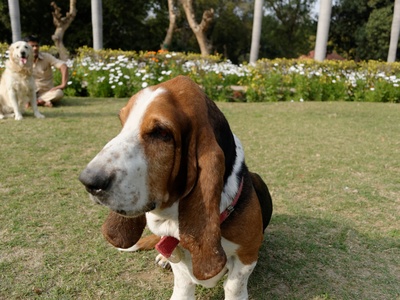
Basset Hound
Bred to work in social packs, Bassets are typically easygoing with other pets. Their placid demeanor means they often ignore cats. Let them meet slowly, allowing the cat to dictate the pace of the introduction.
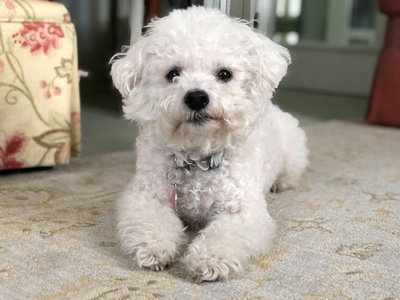
Bichon Frise
Bichons are lovers, not fighters. Their happy-go-lucky attitude and small size make them non-threatening to cats. Supervise initial playtimes and provide separate feeding areas to build a peaceful relationship.

Cavalier King Charles Spaniel
Cavaliers lack a strong prey drive and are highly adaptable to living with cats. Let them meet through a baby gate first so they can get used to each other’s scent and presence safely.
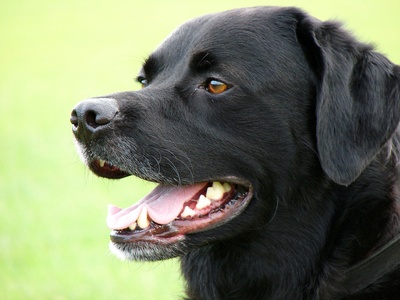
Labrador Retriever
A well-socialized Lab’s good nature extends to felines. Their youthful energy requires management, so use positive reinforcement during leashed introductions to teach them to be gentle around their new housemate.

Pug
Pugs are sturdy, low-energy companions who generally get along with everyone. Their flat-faced anatomy makes vigorous chasing difficult. Ensure your cat has vertical spaces to retreat to if needed.
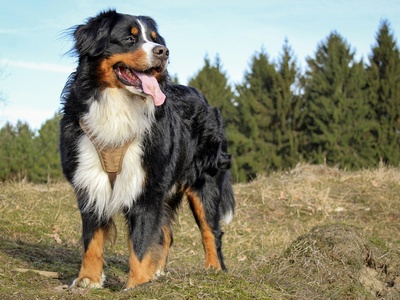
Bernese Mountain Dog
Originally all-purpose farm dogs, Berners are accustomed to living with various animals. Their calm temperament makes them a safe bet, but always supervise initial interactions due to their large size to prevent accidental injury.
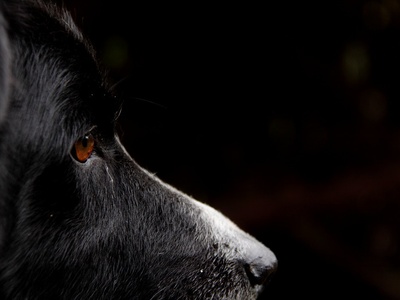
Collie
Famous for their sweet nature, Collies can be great with cats. You may need to manage their herding instinct by redirecting any staring or chasing behavior, but their intelligence makes them quick learners.
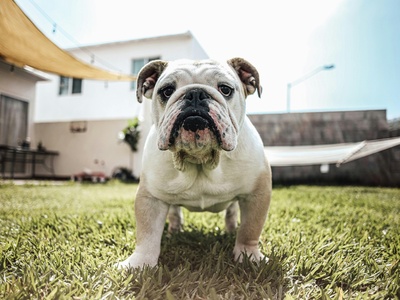
Bulldog
Bulldogs are more likely to be found snoring on the couch than bothering a cat. Their placid temperament means they aren’t easily fazed. Gradual introductions in a calm environment work best.
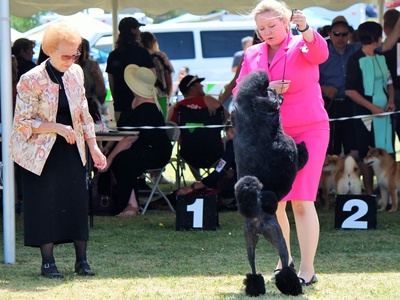
Poodle (Standard)
Poodles were originally water retrievers, not hunters of small game. Their intelligence and eager-to-please attitude make them highly trainable for peaceful coexistence. Use consistent commands to establish rules.
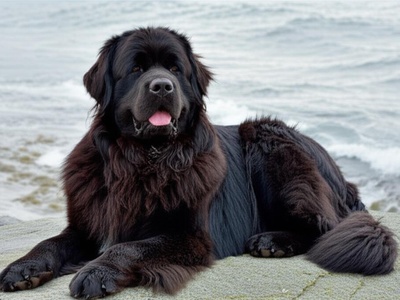
Newfoundland
Renowned for their gentle disposition with smaller creatures, Newfies are a top choice. Their massive size requires supervised introductions to ensure they don’t accidentally trample the cat. Their calmness is a key asset.
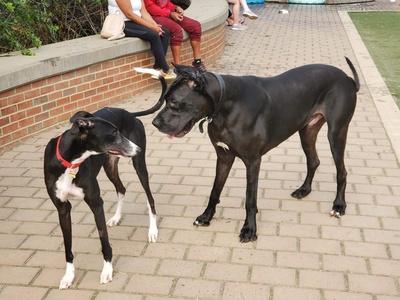
Greyhound
While bred to chase, retired racing Greyhounds are often very cat-tolerant. Many adoption agencies cat-test them first. Introduce on-leash and with a muzzle initially for safety until you can gauge their reaction.
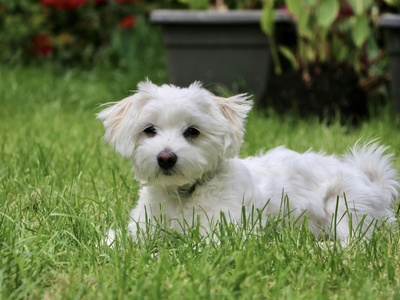
Maltese
The Maltese thrives on companionship and lacks a prey drive. Their tiny size makes them much less intimidating to a cat. Supervise interactions to ensure the cat doesn’t accidentally injure the delicate dog.

Shih Tzu
Bred as palace companions, Shih Tzus are typically friendly toward other pets. Their low energy and people-focused nature mean they’re unlikely to bother a cat. Slow, positive introductions are the key to success.

Cocker Spaniel
Cocker Spaniels can be loving companions to cats, though they have some birding instinct. Leashed introductions and rewarding any calm, gentle behavior are essential for establishing a peaceful household.

Great Dane
Despite their imposing stature, Great Danes are typically gentle and patient with smaller animals. They are people-pleasers and can be taught to respect the cat’s space. Always supervise to prevent accidents from a clumsy paw.
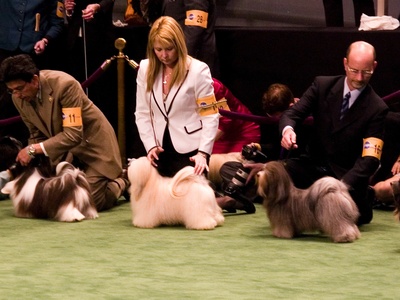
Havanese
This cheerful breed is more interested in being with its people than chasing other animals. Their small but sturdy build and playful nature can make them a great match for an equally playful cat.
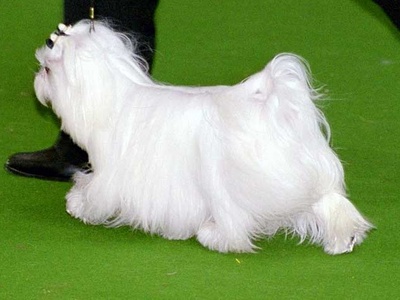
Coton de Tulear
Cotons are known for their charming personalities and generally get along well with other pets. Their goal is to be part of the fun, not to cause trouble. Supervised, playful introductions work well.
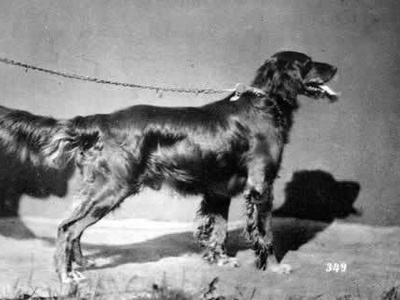
Irish Setter
An Irish Setter’s boundless friendliness can extend to cats, but their puppy energy can be overwhelming. Ensure the dog gets plenty of exercise to stay calm indoors, and teach polite greetings from day one.
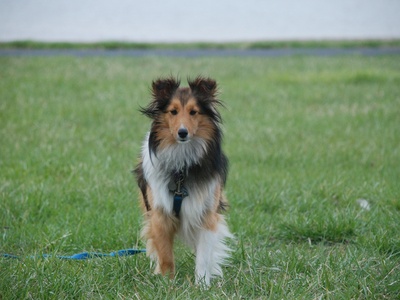
Shetland Sheepdog
Shelties are sweet-natured and devoted. While they might try to gently herd a cat, this can be managed with training. Their high intelligence means they learn quickly what behavior is acceptable around the cat.

Papillon
Despite their delicate appearance, Papillons are smart and confident. They are not known for having a high prey drive and can be taught to coexist beautifully with cats through positive reinforcement training.

Poodle (Miniature)
Like their larger counterparts, Miniature Poodles are highly trainable and eager to please. They can easily learn the rules of living with a cat. Their manageable size makes them a great choice for smaller homes.
